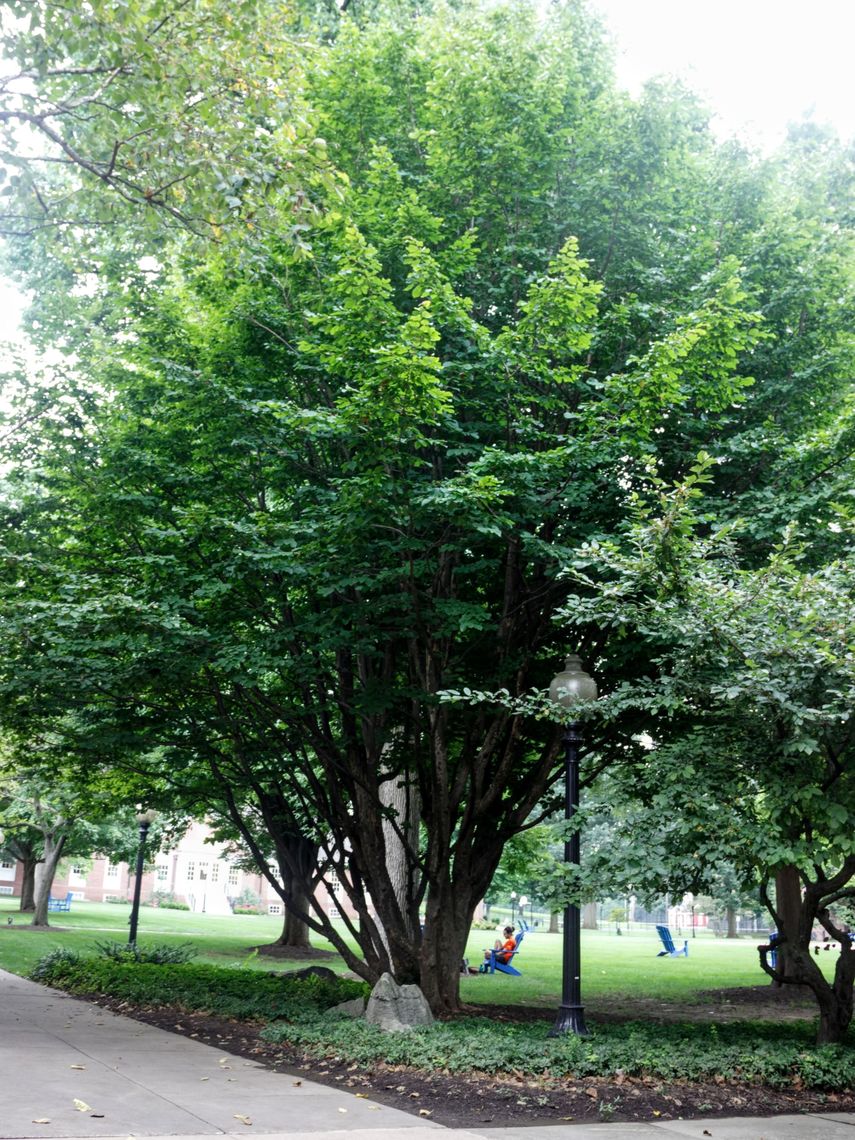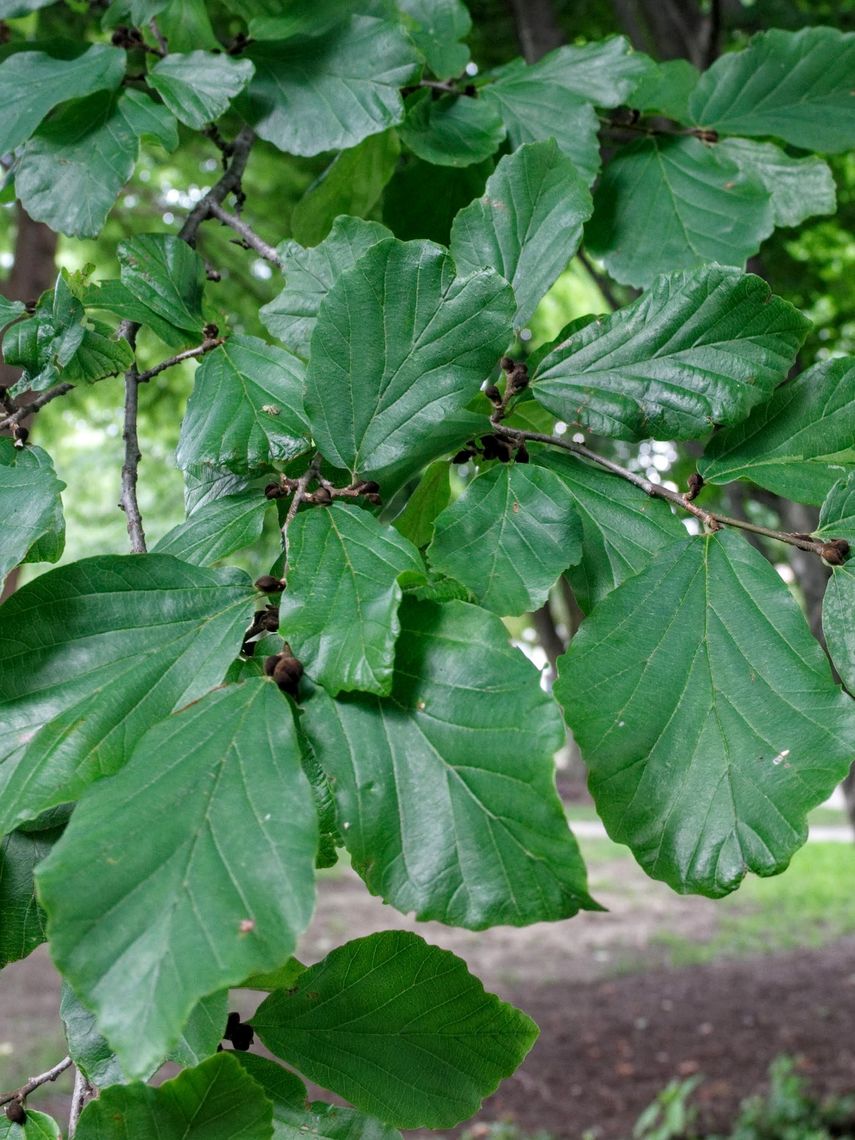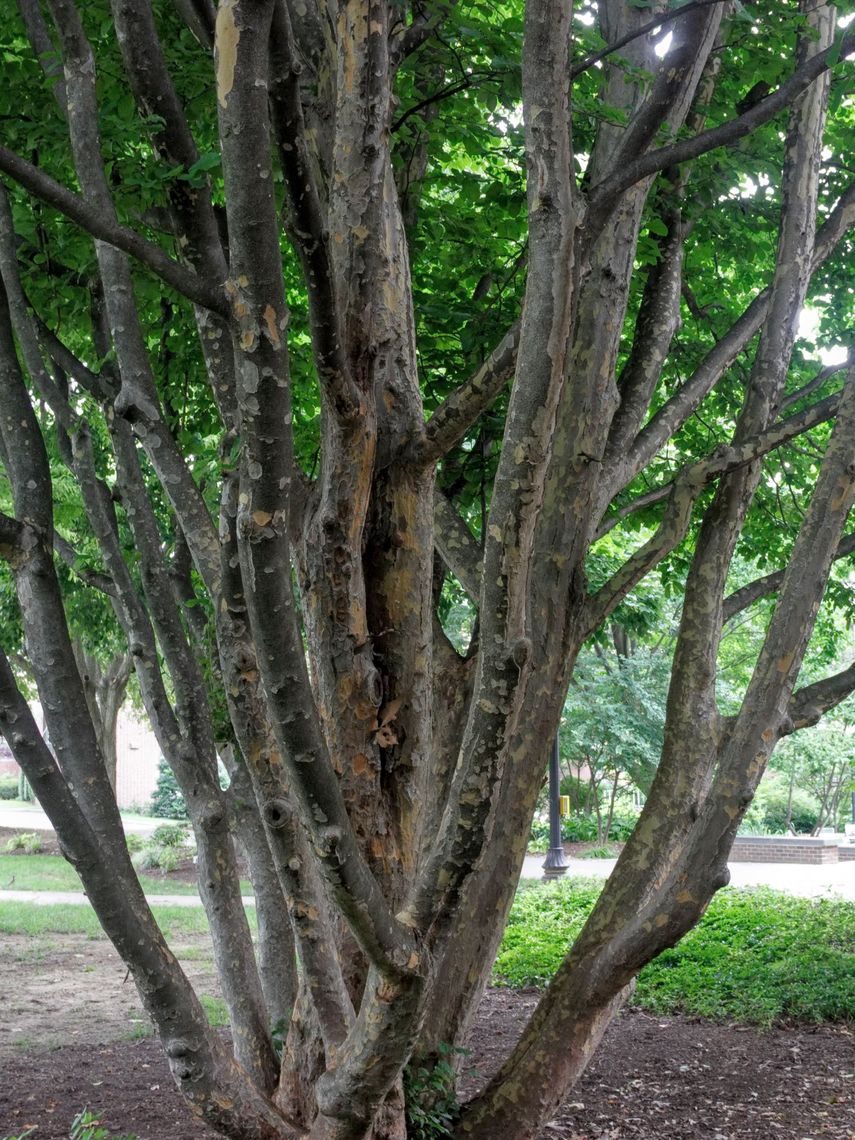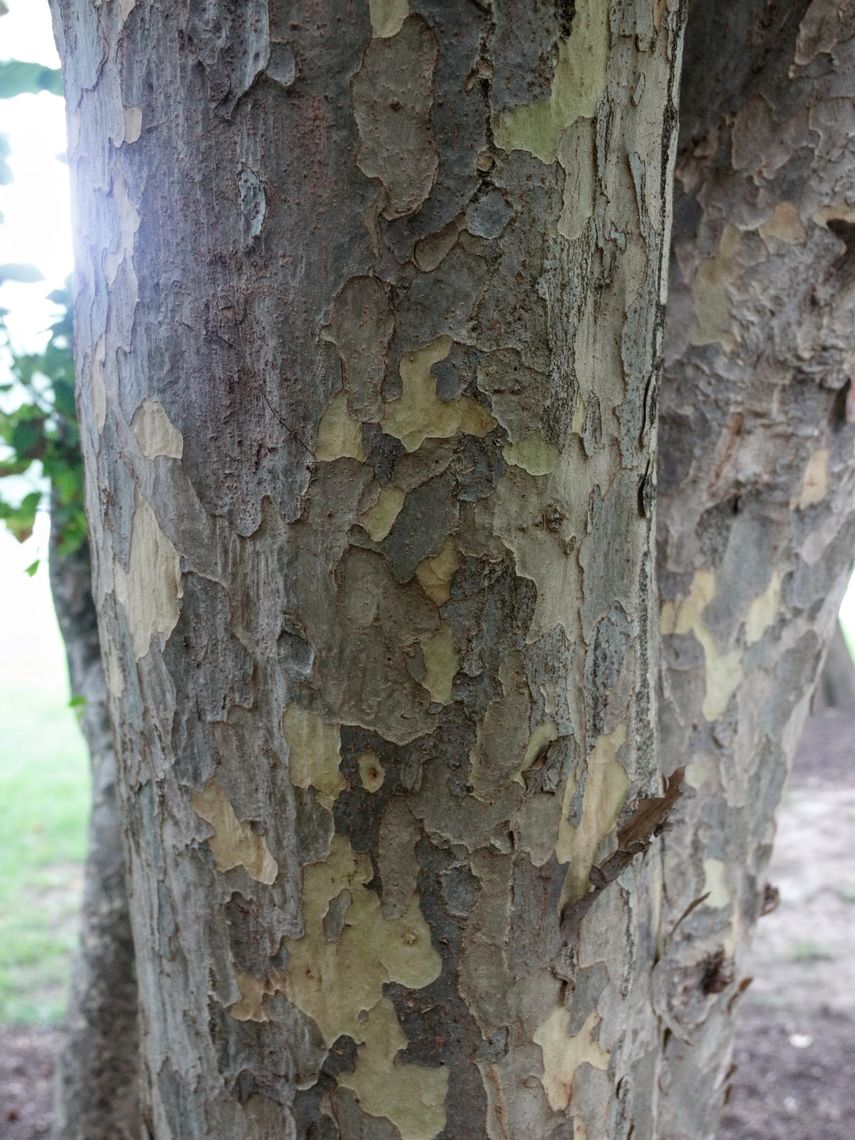Persian Parrotia (Parrotia persica)
The Persian parrotia, also called Persian ironwood, often displays an assortment foliage colors. When growing, the leaves emerge red-purple and then mature to a dark green. The leaves then change to shades of yellow, orange, and red in the fall. The tree's flowers are petalless, though have dense maroon stamens. With age, the tree's bark becomes marked with creamy white, green, and gray spots, giving it a unique look.
Family: Hamamelidaceae (Witch Hazel)
Characteristics: The oval to oblong leaves emerge red-purple and mature to be 2.5-5 inches long and dark green. In the fall, leaves turn yellow, orange, and red. The tree's flowers are petalless and have dense marron stamens. They appear in late winter to early spring, before leaves emerge. Bark is smooth and gray when the tree is young and begins to exfoliate and develop white, gray, and green spots with age. This tree grows as a small upright tree or a large and rounded shrub. It grows 20-40 feet high and 15-30 feet wide.
Foliage: Deciduous (leaves lost seasonally)
Geographic Origin: Iran (non-native)
Cultivation Notes: Requires medium maintenance. Does best in full sun, though can tolerate part-shade. Prefers acidic, moist, and well-drained soils, though is tolerant to a wide range of soil types.
Number on Campus: 1
Sources: Dirr, Morton Arboretum, Missouri Botanical Garden




